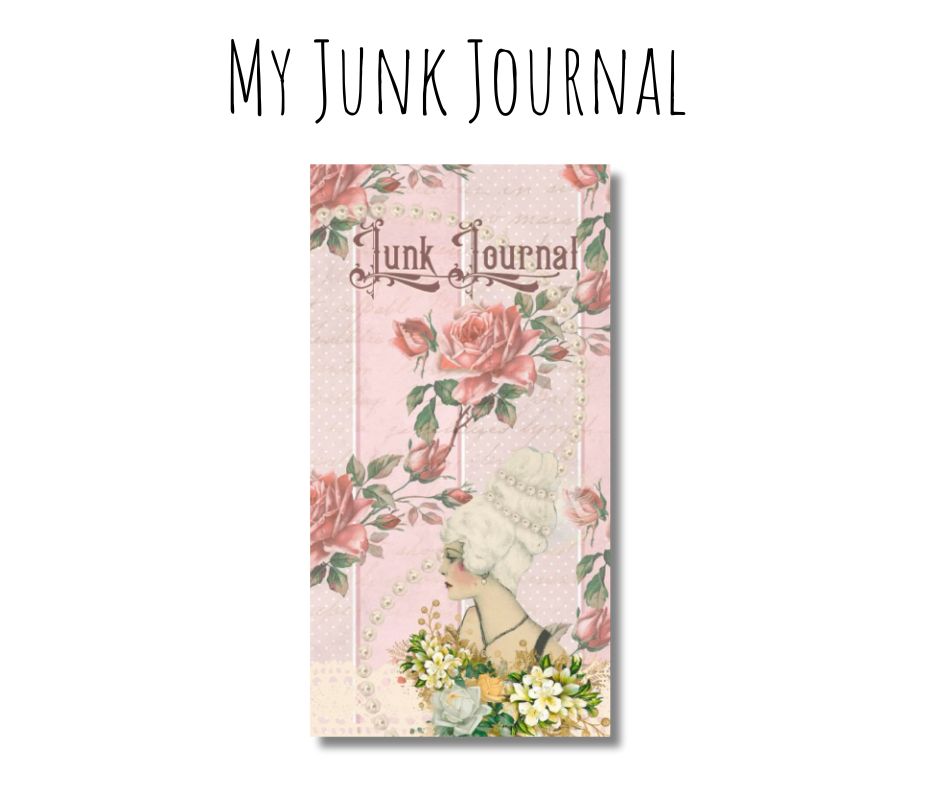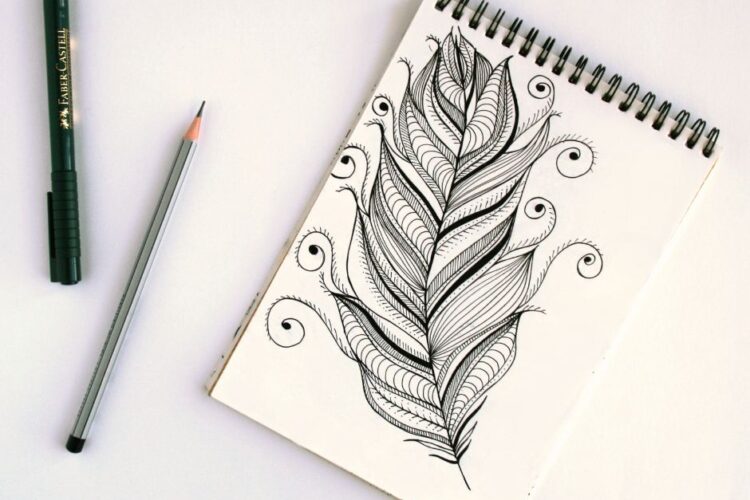The Healing Power of Being Creative
I started to create in small spaces again. I’m too busy and tired to do any large art projects due to work and my family feeling sick. But I love the “daily pages” created by rukristin, so I do them very often. Or I learn to draw a Zentangle! Both I can do within ten minutes and it is still relaxing and grounding.
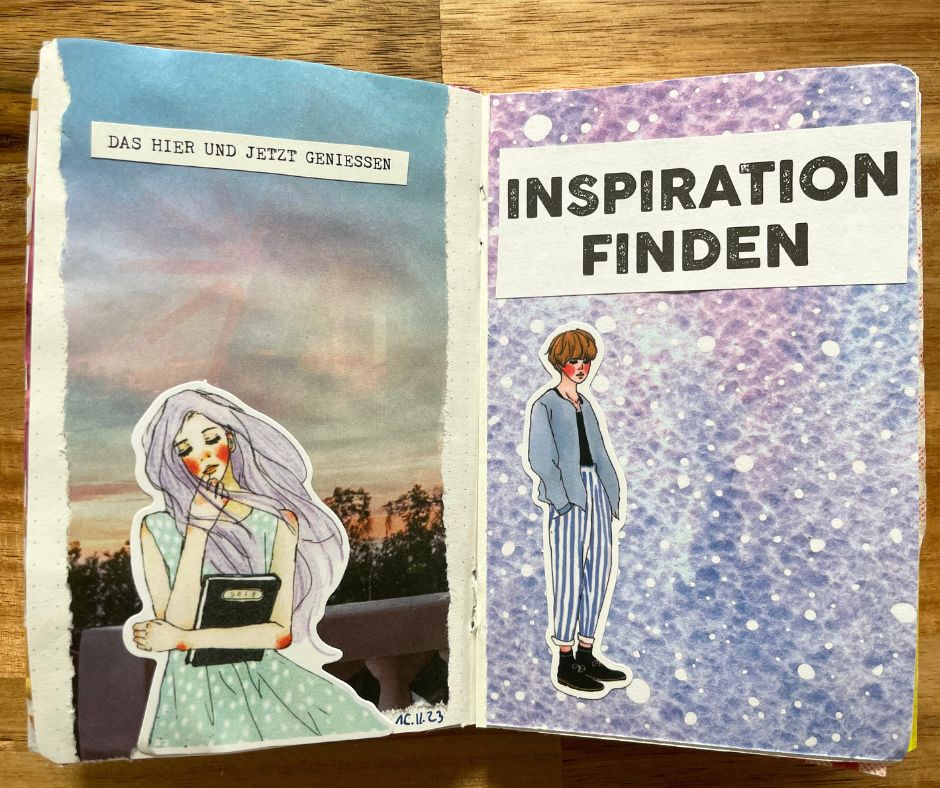
Creativity is like a lifeline for me. It helps me not only escape from chaos and emotional turmoil caused by chronic illnesses, but also thrive in such difficult situations.
Creativity isn’t just about artistic endeavors or creating masterpieces. It’s a mindset, a way of approaching life. When faced with the rigors of chronic illness, creativity becomes a powerful tool for adaptation and empowerment.
One of the most remarkable aspects of creativity is its ability to transport us. When we feel pain or fatigue, immersing ourselves in a painting, music, or a captivating story can transport us to a place where pain becomes less important, even if only for a moment. It’s a form of respite, a temporary reprieve from the overwhelming realities of illness.
Moreover, being creative allows us to redefine our limitations. It’s about finding new avenues, exploring uncharted territories within ourselves. While our bodies may feel restricted, our minds can roam freely through creativity’s expansive landscapes. We learn to adapt, to find joy and fulfillment in unconventional ways.
There’s a unique strength that comes from creating something out of nothing. It’s a reminder that, despite the challenges we face, we still hold the power to shape our experiences. And it doesn’t matter if it’s writing, painting, crafting, or any other form of self-expression!
I started to junk journal a while ago and love using up my scraps and pieces, like on this page. This may not be “art”, but it is my creativity!
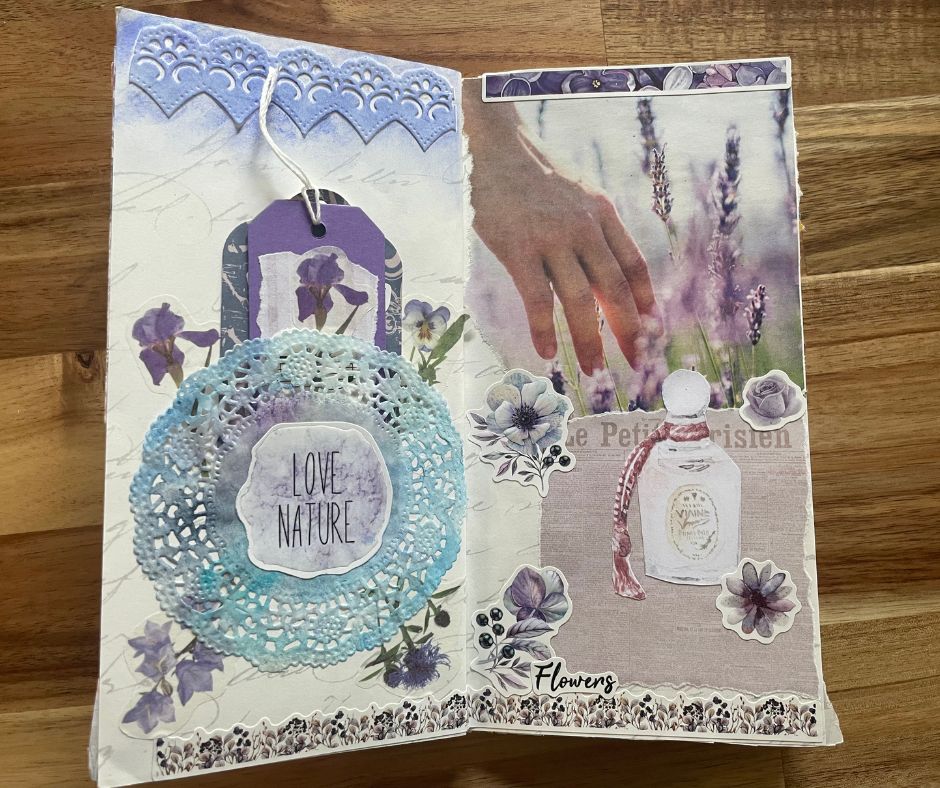
I’ve found that incorporating creativity into my day has been transformative. The main idea is that what matters is not the final result, but the process of creating something, where time seems to stop and worries disappear.
For anyone navigating the complexities of chronic illness, I encourage you to explore your creative side. It doesn’t matter if you consider yourself an artist or not! Find your passion, whether it’s doodling, playing an instrument, cooking, or anything else that resonates with you. Let it be your source of hope.
Here are five practical tips for incorporating creativity into your life while managing a chronic illness:
Embrace Flexibility in Expression
Some days might be more challenging than others, so allow yourself the freedom to explore various forms of creativity. Maybe it’s writing one day, doodling the next, or simply experimenting with different mediums when energy levels fluctuate.
Create an Accessible Workspace
Designate a space that accommodates your needs. Make it comfortable and accessible, ensuring your creative tools or materials are within reach. This helps reduce physical strain and makes it easier to engage in creative activities without overexertion.
This is my workspace on my desk. I have everything I need and don’t have to go downstairs to my studio/guest room, where I only have a standing desk.
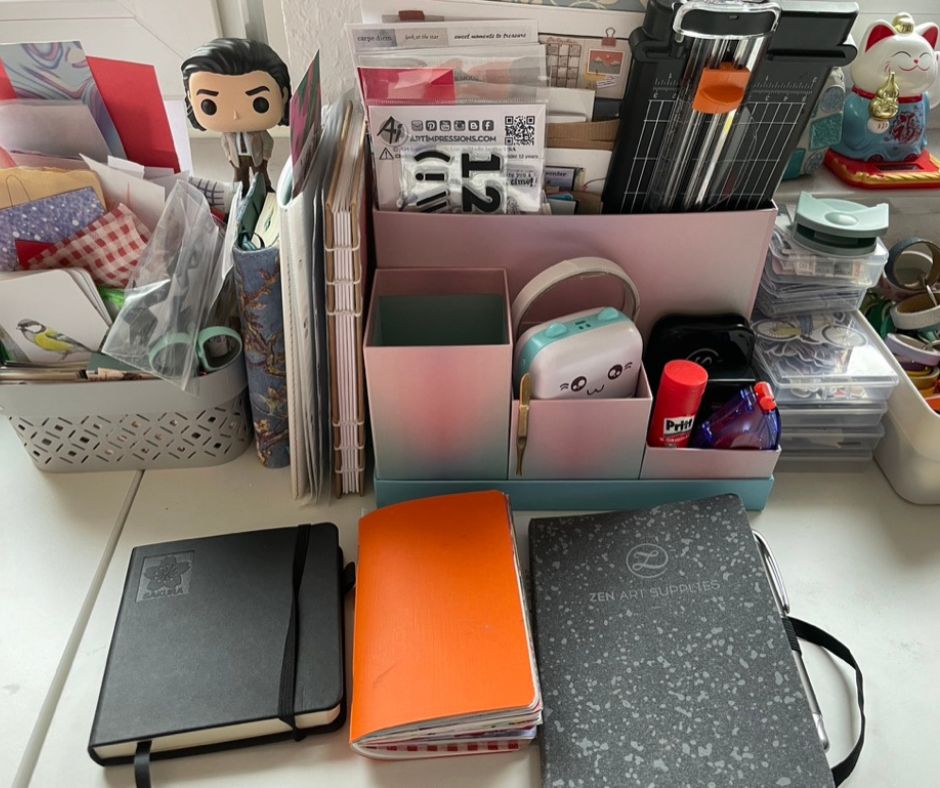
Practice Mindfulness and Adaptive Planning
Listen to your body and adapt your creative routine accordingly. Set achievable goals and be compassionate towards yourself if you cannot accomplish as much as you desire in one session. Small, consistent steps often bring great results!
Embrace Technology and Adaptive Tools
For instance, voice-to-text software can assist in writing when typing is challenging. There are also adaptive art tools designed for individuals with physical limitations that can make drawing or painting more accessible.
You can be creative, too!
With the Zentangles it is easy to get started. The instructions are step by step, so even if you think you can’t draw, you will be able to. I really love the videos by Barbara Langston on YouTube, as they are very easy to understand! https://www.youtube.com/@notperfectzen
Another thing you could do is get a coloring book and some colored pencils! This way you don’t have a blank space and can start immediately. Coloring books were my first step back into my creativity in 2015!
To manage chronic illness and nurture creativity, follow these tips. Remember, the goal isn’t perfection. It’s about finding joy, expression, and solace through your creative endeavors.
Book Recommendation
Here is my “Junk Journal” that I mentioned above. The book contains 60 pages with 10 different background designs. These include vintage newspapers, floral patterns, handwritten letters, and maps. This way you are not confronted with a blank page, which can sometimes really be difficult to get started with. It seamlessly fits into a standard-sized Traveler’s Notebook, but also looks good on its own.
It is available on Amazon (this is an affiliate link!): https://amzn.to/3GbvwWj
